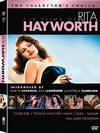





Myrna Loy
Awards | Article | Downloads | Links | Image Credits | THE BEST YEARS OF OUR LIVES
| Page 3 |
|
And yet, if any of Myrna Loy's performances deserved an Academy Award nomination (if not the Oscar itself), it would be her subtle, strong, sympathetic portrayal of Fredric March's wife in William Wyler's Oscar-winning Best Picture of 1946, THE BEST YEARS OF OUR LIVES. The story of three servicemen (March, Dana Andrews and Harold Russell) who return home from World War II and struggle to readjust to civilian life, THE BEST YEARS OF OUR LIVES was hailed by critics and audiences alike for its honest, heart-felt look at the lasting consequences that years of war-time separation had on American servicemen and their families, and it remains one of the greatest movies ever made. While both Fredric March and Harold Russell earned Academy Awards for their performances in THE BEST YEARS OF OUR LIVES, not one of the inspirational contributions of the film's female stars -- especially Loy and Teresa Wright (who plays Loy's daughter) -- were recognized by the Academy with so much as a nomination. In Loy's case, this was most likely due to her subtle style, underplaying important moments by expressing emotion through a quiet look or twitch of the mouth, rather than broader, more attention-grabbing gestures. And yet, the film simply wouldn't be the same without her all-important ability to balance humor and pathos. At least her top billing reflected her essential role in the project. |
|
As hard as it may be to believe that two such popular film comedians as Cary Grant and Myrna Loy had never made a comedy together, such was the case in 1947 when the two finally teamed up for THE BACHELOR AND THE BOBBY-SOXER. Featuring Loy as a straight-laced judge whose younger sister (Shirley Temple) develops a crush on a local ladies' man (Grant), the outcome of this romantic comedy is a foregone conclusion, but the film has a lot of fun getting there. Winner of the Academy Award for the year's Best Original Screenplay (by Sidney Sheldon), THE BACHELOR AND THE BOBBY-SOXER seems most likely to have been written for a mother-daughter relationship rather than the sister-sister relationship between Loy and Temple that appears on screen, but any idea that it was changed to accommodate Loy's continued reluctance to appear old-before-her-time onscreen would be pure speculation. |
Memorable Quotations:
|
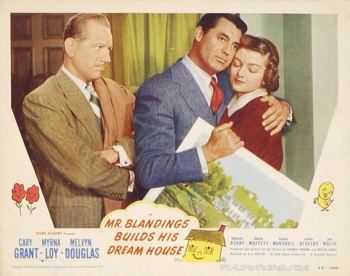 Shortly
after their success together in THE BACHELOR AND
THE BOBBY-SOXER (1947), Loy and Cary Grant
joined forces for yet another post-war comedy, this time as a couple who discover that moving from a New York apartment to a home they're buying,
building, and decorating themselves isn't as easy as it's cracked up to
be -- MR. BLANDINGS BUILDS HIS DREAM HOUSE (1948). Co-starring Melvyn Douglas,
with whom Loy had appeared in the 1940 comedy THIRD FINGER, LEFT HAND, MR.
BLANDINGS proved yet-another box-office triumph, making the 1940s a remarkably
successful, if markedly less productive, decade in Loy's more than 20-year,
100-film movie career. Shortly
after their success together in THE BACHELOR AND
THE BOBBY-SOXER (1947), Loy and Cary Grant
joined forces for yet another post-war comedy, this time as a couple who discover that moving from a New York apartment to a home they're buying,
building, and decorating themselves isn't as easy as it's cracked up to
be -- MR. BLANDINGS BUILDS HIS DREAM HOUSE (1948). Co-starring Melvyn Douglas,
with whom Loy had appeared in the 1940 comedy THIRD FINGER, LEFT HAND, MR.
BLANDINGS proved yet-another box-office triumph, making the 1940s a remarkably
successful, if markedly less productive, decade in Loy's more than 20-year,
100-film movie career.
|
|
|
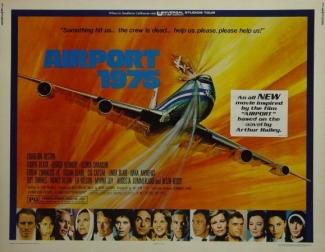 As
the film industry struggled to compete with television during the second half of
the 20th century, spectacular, big-budget disaster films became a movie staple
in the 1970s, and the AIRPORT series was one of the most popular of the genre,
thanks in large part to its planes-full of golden age film stars playing cameo
character roles. Four years after the original AIRPORT (1970) (adapted
from a best-selling novel) in which a both a snow storm and a bomber wreak havoc
on a fully-loaded 707, Universal
Pictures made AIRPORT 1975 (1974) featuring a mid-air collision that kills
or disables everyone capable of landing a 747 and its precious cargo, including
Gloria Swanson, Dana Andrews, Sid
Caesar, Martha Scott and Myrna Loy (playing an alcoholic passenger). As
the film industry struggled to compete with television during the second half of
the 20th century, spectacular, big-budget disaster films became a movie staple
in the 1970s, and the AIRPORT series was one of the most popular of the genre,
thanks in large part to its planes-full of golden age film stars playing cameo
character roles. Four years after the original AIRPORT (1970) (adapted
from a best-selling novel) in which a both a snow storm and a bomber wreak havoc
on a fully-loaded 707, Universal
Pictures made AIRPORT 1975 (1974) featuring a mid-air collision that kills
or disables everyone capable of landing a 747 and its precious cargo, including
Gloria Swanson, Dana Andrews, Sid
Caesar, Martha Scott and Myrna Loy (playing an alcoholic passenger). |
Further Reading:
|
|
Page 1 |
Page 2 | Page 3 |
| Now in Print! |
|---|
| Now on DVD! |
|---|
Buy Videos & DVDs |
|
Buy Movie Posters |
|
Buy Movie Posters |
|
Classic
Movie Merchandise |
|
![]() Printer-friendly version.
Printer-friendly version.
![]() Return
to the top.
Return
to the top.
Last updated:
March 10, 2011.
Reel Classics is a registered trademark of Reel Classics, L.L.C.
© 1997-2011 Reel Classics, L.L.C. All rights reserved. No
copyright is claimed on non-original or licensed material.
Terms of
Use.




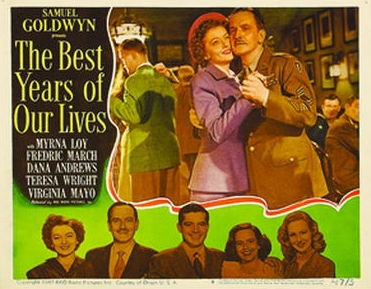 After
more than fifteen years in the industry, Myrna Loy took a hiatus from Hollywood
filmmaking during World War II and moved to New York where she devoted much of
her time to war work, especially for the American Red Cross. After the
war, she returned to Hollywood and reluctantly accepted a role she feared would
permanently age her out of the romantic comedy roles her fans liked best -- that
of a middle-aged married woman with grown children.
After
more than fifteen years in the industry, Myrna Loy took a hiatus from Hollywood
filmmaking during World War II and moved to New York where she devoted much of
her time to war work, especially for the American Red Cross. After the
war, she returned to Hollywood and reluctantly accepted a role she feared would
permanently age her out of the romantic comedy roles her fans liked best -- that
of a middle-aged married woman with grown children. 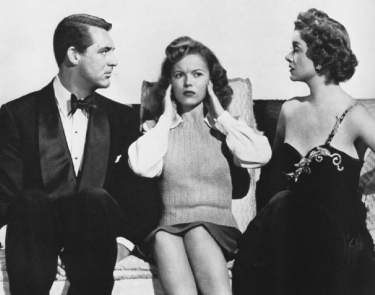
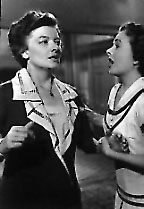 Having
won release from her contractual obligations to
Having
won release from her contractual obligations to 
